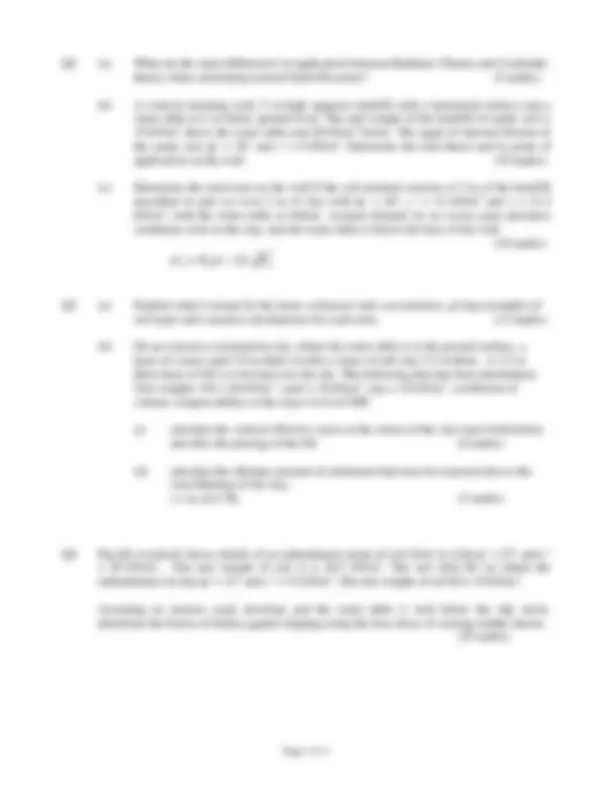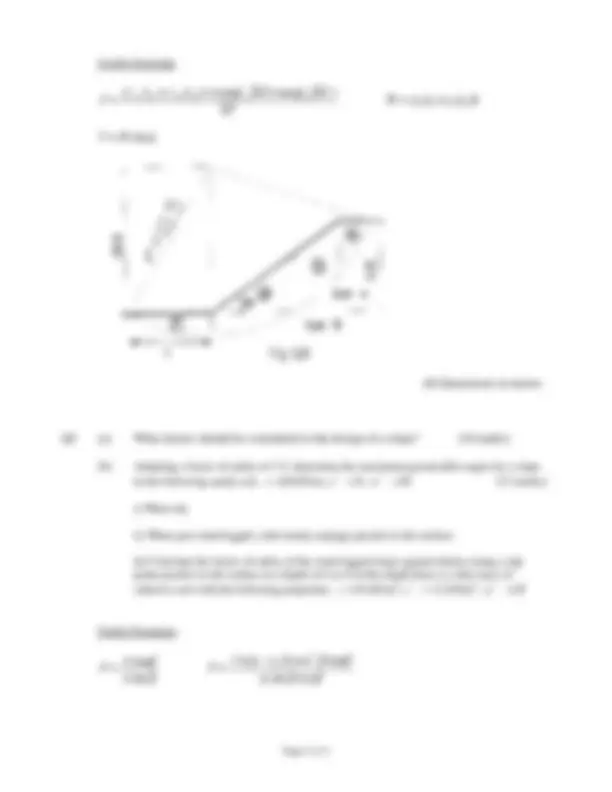




Study with the several resources on Docsity

Earn points by helping other students or get them with a premium plan


Prepare for your exams
Study with the several resources on Docsity

Earn points to download
Earn points by helping other students or get them with a premium plan
Community
Ask the community for help and clear up your study doubts
Discover the best universities in your country according to Docsity users
Free resources
Download our free guides on studying techniques, anxiety management strategies, and thesis advice from Docsity tutors
Main points of this past exam are: Vertical Bearing Stress, Factor of Safety, Passive Resistance, Two Soil Types, Trapezoidal Distribution, Triangular Distribution, Lateral Earth Pressures, Rankines Theory, Coulombs Theory
Typology: Exams
1 / 4

This page cannot be seen from the preview
Don't miss anything!



Semester 2 Examinations 2011
Module Code: CIVL
School: Civil, Structural and Environmental Engineering
Programme Title: Bachelor of Engineering in Civil Engineering – Year 3
Programme Code: CCIVL_7_Y
External Examiner(s): Mr J. Murphy, Ms. M. Kyne
Internal Examiner(s): Ms. Norma Hurley
Instructions: Answer FOUR Questions. Please state the units of each numerical answer
Duration: 2 hours
Sitting: Semester 2 2011
Requirements for this examination:
Note to Candidates: Please check the Programme Title and the Module Title to ensure that you have received the correct examination. If in doubt please contact an Invigilator.
Q1 The cross-section of a proposed concrete retaining wall is shown below in Fig. Q1. The unit weight of the concrete is 24 kN/m^3. Determine the factor of safety against overturning , the factor of safety against sliding (ignoring passive resistance) and the vertical bearing stress imposed on the soil for the following conditions:
(a) supporting cohesionless soil, fully drained c’ = 0 kN/m^2 , φ = 35o, γ = 22 kN/m^3 (10 marks)
(b) supporting a cohesive soil, assuming that cracks will develop in the tension zone. cu = 21 kN/m^2 , γ = 18 kN/m^3 (10 marks)
(c) Comment on the differing results for the two soil types. (5 marks)
Useful formulae:
FOSsliding =
FOSoverturning = o
s
V x = Ms - Mo
qmax = 2
qmax =
(triangular distribution) FOSsliding = A
u
Fig Q all dimensions in metres
Useful formulae
All dimensions in metres
Q5 (a) What factors should be considered in the design of a slope? (10 marks)
(b) Adopting a factor of safety of 1.5, determine the maximum permissible angle for a slope in the following sandy soil, γ=20 kN/m 3 ; c′= 0; φ′=36° (15 marks)
i) When dry
ii) When just waterlogged, with steady seepage parallel to the surface
iii) Calculate the factor of safety of the waterlogged slope against failure along a slip plane parallel to the surface at a depth of 4 m if at this depth there is a thin layer of cohesive soil with the following properties. γ=18 kN/m^3 ; c ′= 12 kN/m^2 ; φ′=24°
Useful Formulae: